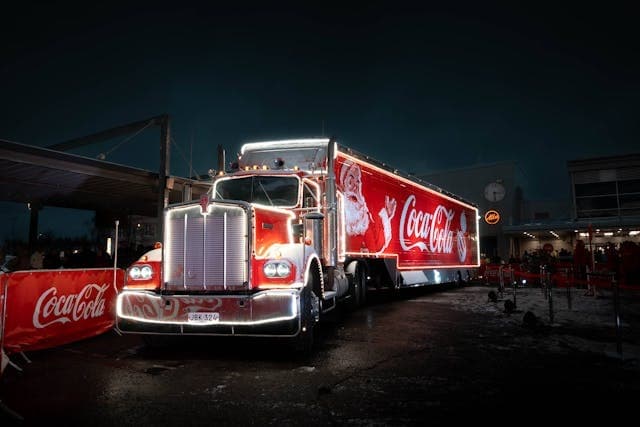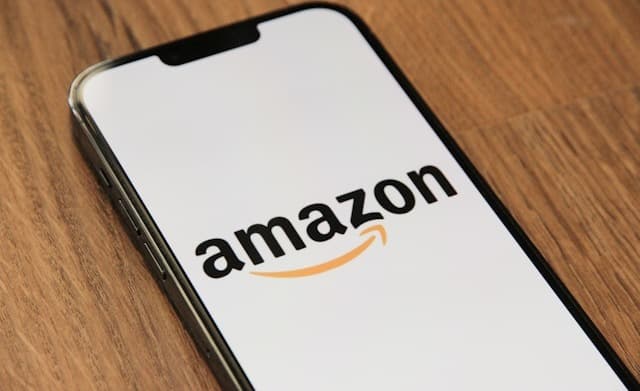The Ultimate Holiday Marketing Campaign Guide for Brands to Spark Sales This Christmas
As the season’s first lights begin to sparkle and festive music fills the air, consumers shift into a holiday mindset. Shoppers begin hunting for gifts, refreshing traditions, and searching for brands that can make the season feel special. Holiday lights appear in storefronts, inboxes fill with festive offers, and consumer spending surges to its yearly peak.
According to the National Retail Federation (NRF), the average winter holiday spending is projected to be approximately $890.49 per person in the United States. For brands, this magical, but crowded moment demands more than a standard promotional push. Standing out requires strategy, timing, and messages that resonate beyond discounts. This article will explain what holiday marketing campaigns are, why they matter, and how to create a successful holiday marketing strategy.
Major Holidays and Seasonal Opportunities for Brands
November Holidays & Sales Events
November marks the official start of seasonal shopping. Consumers begin browsing early promotions, comparing deals, and planning purchases before the peak retail dates.
Key Events
Thanksgiving: Fourth Thursday of November
Black Friday: The day immediately following Thanksgiving.
Small Business Saturday: The Saturday immediately following Thanksgiving (and Black Friday).
Cyber Monday: The Monday immediately following Thanksgiving weekend.
Consumer Behavior Trends in November
Shoppers begin researching earlier, often weeks before the major sales. Price sensitivity increases, but so does the willingness to purchase when a deal feels worthwhile. Many consumers rely on email alerts, website wishlists, and social media updates to track discounts. Trust and convenience strongly influence final purchase decisions.
Opportunities for Brands
Early-bird promotions: Launching early incentives helps brands capture attention before ad costs peak. Shoppers appreciate advanced access to offers, especially on high-ticket items.
Email list-building: The pre-holiday period is ideal for growing email lists through gated promotions, downloadable gift guides, or loyalty sign-ups. Segmented email lists lead to stronger seasonal marketing campaigns.
Gift guides and pre-sales: Curated guides provide clarity for overwhelmed shoppers. Pre-sale access adds exclusivity and reduces last-minute pressure.
Flash deals and countdown campaigns: Limited-time offers create urgency without relying solely on discounts. Countdown timers work well across landing pages, email, and SMS.
December Holidays & Sales Events
December is defined by emotional shopping and tradition-driven purchasing. Consumers look for meaningful gifts, memorable experiences, and convenient last-minute options.
Key Events
Christmas: December 25
Hanukkah: Starts on the 25th day of the Hebrew month of Kislev.
Kwanzaa: December 26 to January 1
New Year’s Eve: December 31
Consumer Behavior Trends in December
Holiday sentiment peaks throughout the month. Many shoppers continue buying until shipping deadlines close, while others shift to in-store pickup or digital gifts. Emotional triggers, brand trust, and convenience become major decision factors.
Opportunities for Brands
Last-minute shopping campaigns: Urgent messaging, express-shipping reminders, and quick-gift categories meet the needs of late shoppers.
Holiday bundles & limited-edition releases: Seasonal bundles increase average order value and make gifting easier. Limited products tap into seasonal excitement.
Emotional storytelling: Story-driven messaging aligns with the spirit of the holidays. It builds stronger connections than discount-led promotions alone.
Omnichannel experiences: Coordinated email, social, in-store, and SMS communication ensures customers receive consistent interactions wherever they shop.
Shipping deadline reminders: Brands should highlight guaranteed shipping dates across websites, emails, and ads to help customers plan confidently.
How Brands Can Still Stand Out During the Holiday Season
The holiday period creates one of the most saturated marketing environments of the year. Brands across every industry increase budgets, driving higher competition for attention across paid search, social media, email, and display channels. As advertising volume surges, consumers encounter a constant stream of promotions, which often leads to fatigue and selective engagement.
Despite this overcrowding, brands can still differentiate themselves by focusing on clarity, value, and relevance. Campaigns that prioritize emotional connection, personalized messaging, and seamless customer experiences gain an advantage over discount-heavy strategies.
How to Build a Successful Holiday Marketing Strategy?
Building an effective holiday marketing strategy requires structured planning, creativity, and precise execution. Here's how to build a successful holiday marketing strategy step by step:
1. Set Clear Objectives & KPIs
Every campaign begins with a clear purpose. Define measurable goals, such as increasing sales by 20%, boosting website traffic, or growing your email subscriber list. Establish Key Performance Indicators (KPIs) to track success, such as:
Conversion rate
Return on ad spend (ROAS)
Customer acquisition cost (CAC)
Email open and click-through rates
These metrics help marketers understand what's working and optimize accordingly.
2. Research Audience & Trends
Understanding the target audience's preferences, motivations, and behaviors is crucial. Utilize tools such as Google Trends, Meta Audience Insights, and Nielsen reports to identify what customers are searching for during the holiday season.
Analyze last year's holiday campaign examples to identify winning strategies. Social media listening can also reveal emotional triggers and trending topics to inspire messaging and creative assets.
3. Budget Allocation
A successful seasonal marketing strategy often begins with budgeting. Marketers should allocate funds across key channels such as:
Paid advertising (Google Ads, Meta, TikTok)
Email marketing automation
Influencer partnerships
Content production (videos, graphics, landing pages)
A good rule of thumb is to dedicate 20–30% of the total annual marketing budget to holiday marketing campaigns, depending on your business model and industry. Additionally, leave room for retargeting and last-minute optimizations, as ad costs typically rise during November and December.
4. Select the Right Channels
The right platform mix depends on where your audience spends their time.
E-commerce brands: Focus on Google Shopping, Instagram, and email automation.
Local retailers: Utilize Facebook, community partnerships, and in-store events.
B2B companies: Use LinkedIn campaigns and holiday-themed webinars.
Omnichannel coordination ensures consistent messaging. For instance, combine email campaigns with retargeting ads and social content to guide customers from awareness to purchase.
Holiday Marketing Timeline: When to Start and How to Plan Ahead
Timing can make or break holiday marketing campaigns. Shoppers typically begin browsing for deals as early as September, with major spending peaks occurring between Black Friday and Christmas Eve. A structured seasonal marketing strategy helps brands prepare, launch, and optimize campaigns effectively across all stages of the season.
Here's how to plan for each phase of the holiday calendar:
Pre-Season (8–12 Weeks Out): Ideation & Asset Creation
Preparation begins at least two to three months before the holidays. This stage focuses on research, planning, and creative development.
Key actions:
Analyze previous holiday campaign examples for performance insights.
Brainstorm fresh holiday marketing ideas that align with current consumer trends.
Design visuals, product packaging, and copy that reflect seasonal themes.
Finalize campaign calendars and ad budgets.
Marketers should also test new tools or channels early, such as AI-powered personalization, short-form video ads, or AR/VR campaigns, to refine what works before the rush begins.
Mid-Season: Early Offers & Audience Testing
By mid-October to early November, brands should launch early bird promotions to attract proactive shoppers. Use this period to test:
Email subject lines and creative variations.
Ad copy and CTAs for engagement.
Targeting parameters for paid campaigns.
These insights allow marketers to fine-tune performance before the peak season. Early discounts, such as "Pre-Black Friday Sales," can also create buzz and drive early conversions.
Peak Season: Flash Sales & Gift Reminders
The period between Thanksgiving and Christmas is when holiday marketing campaigns hit full stride. This is the time for bold offers, engaging storytelling, and omnichannel execution.
Best practices:
Launch flash sales and limited-time offers.
Run retargeting campaigns for cart abandoners.
Send gift reminder emails and "last day to ship" alerts.
Highlight customer reviews and social proof.
Social media contests and influencer collaborations can amplify visibility, while urgency-driven tactics, such as countdown timers, stock indicators, or shipping deadlines, can prompt action.
Post-Holiday: Retention & Feedback Loops
After the holidays, it's not the time to stop but to retain new customers. Use this stage to nurture long-term relationships.
Post-holiday strategies:
Send thank-you emails and satisfaction surveys.
Offer loyalty discounts for January purchases.
Collect user-generated content from holiday experiences.
Analyze performance metrics to identify what worked.
Creative Holiday Marketing Ideas That Drive Engagement
Creativity is the heartbeat of every successful holiday marketing strategy. With consumer attention at its peak, brands need fresh, emotionally resonant ideas that go beyond discounts. Below are some proven tactics to inspire your next seasonal marketing campaign.
1. Storytelling & Emotion
The holiday season is emotionally charged and filled with nostalgia, gratitude, and generosity. Brands that tap into these emotions can create campaigns that resonate deeply.
Think of Coca-Cola's "Share a Coke" campaign or Apple's "Snowball Fight" ad, both of which used storytelling to connect families and evoke joy.
To emulate this approach:
Highlight customer stories or traditions.
Use video marketing to capture authentic emotions.
Focus on values such as togetherness, kindness, and gratitude.
2. Interactive Campaigns
Engagement is key. Create interactive experiences that invite participation, such as quizzes, polls, augmented reality filters, or online advent calendars.
Interactive content enhances dwell time and brand recall, providing marketers with valuable first-party data. Retailers can also integrate gamification, such as digital spin-the-wheel discounts, to make shopping more engaging and enjoyable.
For example, Starbucks' “Starbucks for Life" game turns holiday loyalty rewards into a fun, repeatable experience that drives app engagement and sales.
3. Limited-Time Offers
Scarcity and urgency are proven psychological motivators. Limited-time offers during holidays push customers to act fast.
Tactics include:
24-hour flash sales
Early-access deals for email subscribers
Countdown timers on landing pages
Exclusive bundles or free gift wrapping
Ensure that you clearly communicate deadlines and shipping cutoffs as transparency builds trust, especially during busy holiday periods.
4. User-Generated Content (UGC)
UGC strengthens community and social proof. Encourage customers to share photos or videos featuring your products using branded hashtags. This approach not only expands reach but also builds authenticity, as 79% of consumers say that UGC has a high influence on their purchase decisions.
Run a holiday photo contest, feature top entries on your social media pages, and reward participants with gift cards or exclusive deals.
Real Examples of Successful Holiday Marketing Campaigns
Studying successful holiday marketing campaigns reveals what truly drives engagement and conversions. The most effective campaigns blend emotional storytelling, timing, creativity, and personalization. Here are a few standout examples from leading brands:
1. Coca-Cola's "Holidays Are Coming"

Coca-Colahas mastered a holiday marketing strategy with its annual Christmas campaigns. The brand's iconic red trucks, classic jingle, and imagery of family gatherings have become synonymous with the holiday season for decades.
Why it works:
Emotional consistency: The campaign taps into nostalgia and joy, themes deeply rooted in holiday culture.
Visual storytelling: Recognizable imagery and consistent design reinforce brand memory.
Early launch: Coca-Cola starts promoting in November, extending visibility throughout the season.
Key Takeaway
Coca-Cola demonstrates that emotional continuity and timeless storytelling can outperform short-term promotional tactics in holiday marketing campaigns.
2. Starbucks' "Red Cup Season" Campaign

Starbucks transforms its coffee experience each November with limited-edition red cups and festive drinks. Customers eagerly await the announcement each year, often sharing photos on social media.
Why it works:
User participation: Encouraging customers to post their holiday drinks generated millions of organic impressions.
Seasonal anticipation: The "drop" of red cups each year builds excitement similar to a product launch.
Consistency: The campaign reinforces Starbucks' connection to warmth, comfort, and seasonal togetherness.
Key Takeaway
Starbucks shows how a simple design element can evolve into a viral, loyalty-building moment when paired with user engagement.
3. Amazon's "Kindness, the Greatest Gift" Ad

Amazon's 2021 holiday ad featured a young woman helping her anxious neighbor through a small act of kindness. It resonated globally, emphasizing empathy and human connection.
Why it works:
Human-centered message: The campaign resonated with audiences on an emotional level, rather than focusing solely on sales.
Brand authenticity: It subtly reflected Amazon's role in connecting people while prioritizing empathy.
Cross-channel storytelling: The message was shared consistently across TV, digital, and social media.
Key Takeaway
Amazon demonstrates how empathy-driven narratives can enhance a holiday marketing strategy by fostering brand trust rather than relying solely on promotions.
4. REI's "#OptOutside"
REI took a bold stance in 2015 by closing its stores on Black Friday and encouraging customers to spend the day outdoors instead. This unconventional move challenged consumerism while reinforcing the brand's values.
Why it works:
Purpose alignment: The message matched REI's brand identity as an outdoor lifestyle company.
Social engagement: The #OptOutside hashtag became a movement, adopted by millions of outdoor enthusiasts.
Long-term loyalty: Customers respected REI's authenticity and mission-driven stance.
Key Takeaway
REI proves that value-driven actions can become powerful seasonal marketing strategies, inspiring loyalty beyond discounts or promotions.
5. Apple's "Share Your Gifts" Campaign

Apple consistently delivers emotionally resonant holiday campaigns, but "Share Your Gifts" stands out for its artistry. The animated short film depicted a young creator hesitant to share her work until encouraged by her dog, a subtle metaphor for self-expression and confidence.
Why it worked:
Emotional storytelling: The narrative of creativity and vulnerability resonates universally.
Product integration: Apple's tools are featured naturally within the story, not as the focus.
Cinematic quality: High production values and original music enhanced emotional engagement.
Key Takeaway
Apple demonstrates that cinematic storytelling and subtle branding can transform a holiday campaign into a memorable creative experience.
Tips for Standing Out in a Crowded Holiday Market
Utilize storytelling instead of pure promotion: Narratives evoke emotion and build brand affinity. Shoppers remember how a story made them feel long after a sale ends.
Use personalization and segmented messaging: Targeted communication based on behavior, past purchases, and interests increases engagement and conversions.
Create interactive content: Quizzes, giveaways, countdown calendars, and AR filters attract attention and boost social engagement.
Emphasize unique selling points (USPs): Clear value propositions help consumers distinguish brands in a crowded landscape.
Build emotional and value-driven campaigns: Campaigns grounded in shared values such as sustainability, family connection, and simplicity often outperform discount-only messaging.
Offer exclusive holiday perks: Free shipping, loyalty rewards, and early access increase customer satisfaction while reducing cart abandonment.
Use authentic user-generated content (UGC): Real customer stories and reviews build trust during a season when consumers seek reassurance.
Optimize for mobile and fast checkout: Fast-loading pages and seamless checkout experiences reduce friction for mobile-first holiday shoppers.
Common Holiday Marketing Mistakes and How to Avoid Them
Even experienced marketers can make errors during high-pressure holiday periods. Avoid these common pitfalls to maximize results:
1. Starting Too Late
Many businesses begin their campaigns in November, and by then, most shoppers have already made key purchase decisions.
Fix: Start planning at least 8–12 weeks before the holiday season to ensure assets and logistics are ready.
2. Over-Discounting
Deep discounts may boost short-term sales but erode brand value in the long run.
Fix: Focus on value-driven promotions, such as bundles, loyalty bonuses, or limited-edition products, rather than endless markdowns.
3. Ignoring Mobile Optimization
Failing to optimize for mobile can severely limit a campaign's reach, as mobile commerce accounts for over 45% of U.S. holiday purchases.
Fix: Ensure your website and emails are mobile-friendly, fast, and frictionless.
4. Neglecting Customer Service
During peak periods, customer support is often overwhelmed, and ignoring customer service during the holiday rush can damage brand reputation and lead to lost sales.
Fix: Invest in chatbots, self-service FAQs, and clear shipping policies to maintain satisfaction.
5. Forgetting Post-Holiday Engagement
After the holidays, many brands go silent. This can result in missing the opportunity to convert seasonal shoppers into loyal, repeat customers.
Fix: Continue engagement with thank-you messages, product care tips, and loyalty offers.
6. Overlooking Data Analysis
Overlooking data analysis means losing valuable insights that could improve future campaign performance and ROI.
Fix: Conduct post-campaign audits to track results, identify trends, and apply learnings to next year's holiday marketing strategy.
Conclusion
The most successful holiday marketing campaigns extend beyond festive discounts; they foster emotional connections that cultivate lasting loyalty. By planning early, crafting emotionally resonant storytelling, and leveraging data-driven insights, marketers can transform seasonal campaigns into year-round growth engines. The most successful brands are those that treat holiday campaigns not as one-time events but as long-term investments in customer connection and loyalty.
This holiday season, bring your marketing campaigns to life with Flam. Transform ordinary promotions into unforgettable, immersive experiences that captivate, engage, and convert audiences like never before.